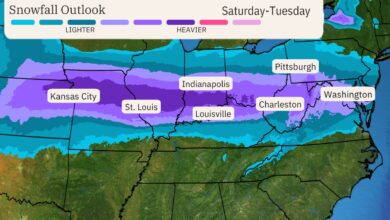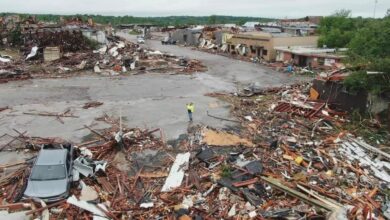COVID-19 Virus Alert: 7 States Hit ‘Very High’ Levels

As the covid 19 virus continues to evolve, the importance of staying informed and prepared cannot be overstated. This ongoing battle against infectious diseases highlights the necessity for communities to adapt swiftly in response to rising COVID-19 cases. With the advent of new COVID variants, understanding the transmission rates and the effectiveness of interventions, including COVID testing and COVID vaccines, remains critical. This backdrop sets the stage for an urgent dialogue on the current resurgence of the virus, especially as seven states experience ‘very high’ alert levels, underscoring the relentless nature of the pandemic.
This article delves into the present situation in these affected states, including Los Angeles County, exploring the substantial increase in COVID cases. Moreover, it sheds light on how wastewater data is becoming an essential tool in understanding COVID-19 levels, providing early warning signals of outbreak resurgences. Furthermore, the discussion extends to health recommendations and guidelines put forth by health authorities such as the CDC, encapsulating COVID testing, isolation protocols, and guidance on COVID vaccines and the coronavirus vaccine. By examining these key areas, the article aims to furnish readers with comprehensive insights into combating the virus effectively, emphasizing the importance of adhering to updated COVID isolation guidelines and preventive measures.
Current Situation in the Affected States
In California, the COVID-19 situation remains a critical concern. As of July 15, approximately 72.8% of Californians have completed a primary series of a COVID-19 vaccine, with 14.9% up-to-date on their vaccinations 1. Hospitalizations have increased by 35% in the last two weeks, signaling a surge in cases 1.
Arkansas reports a high vulnerability with 36% of the population in high-risk areas 2. The state has ceased collecting detailed testing data as of September 21, 2022, which complicates tracking the virus’s spread 2.
Florida has paused its weekly updates due to limited data, with plans to resume on October 1, 2024 3. Currently, 82.9% of Floridians have received at least one dose of a vaccine, and 30.7% have received a booster dose 3.
In Maryland, the community risk level varies, with some areas showing low vulnerability while others are higher 4. Maryland has adapted its COVID assessment to account for vaccinations and natural immunity, with 24.3% of the population having received a bivalent booster dose 4.
Nevada is experiencing a spike in COVID-19 cases, attributed to the FLiRT variants of Omicron, which are highly transmissible though less severe 5. Health officials emphasize the importance of vaccination and booster shots to manage the spread 5.
Oregon has seen significant efforts from OHSU to increase vaccination rates, especially among underserved communities 6. Despite these efforts, the state continues to face challenges in managing new cases and ensuring widespread testing 6.
Texas remains the most vulnerable state, with 63% of its population in high-risk areas 7. The state has stopped reporting detailed COVID-19 data to the CDC, which affects the accuracy of current health assessments 7.
Understanding COVID-19 Levels Through Wastewater Data
What is Wastewater Surveillance?
Wastewater surveillance involves the analysis of untreated wastewater to detect the presence of the SARS-CoV-2 virus shed in the feces of infected individuals. This method provides a non-invasive way to monitor the spread of the virus across a community, capturing data from both symptomatic and asymptomatic carriers. Unlike traditional testing, which requires individual participation and access to healthcare, wastewater surveillance can offer a broader view of community health dynamics without these limitations.
Current Findings and Their Implications
Recent studies highlight the effectiveness of wastewater surveillance in tracking COVID-19 trends. For instance, in Denmark, extensive wastewater testing aligned closely with the incidence curves of COVID-19, confirming its utility in reflecting community-level viral spread. Similarly, in the U.S., wastewater data has been shown to precede traditional surveillance metrics like case counts and hospitalizations by several days, providing early warning signs of infection surges.
This surveillance method, however, is not without challenges. Variability in virus shedding rates and potential dilution or degradation of viral particles in sewer systems can affect the accuracy of data derived from wastewater analysis. Despite these challenges, the integration of wastewater surveillance with conventional data sources has proven valuable, especially in scenarios where direct testing is less feasible or when rapid assessment of community transmission is necessary.
By leveraging wastewater data, public health officials can gain critical insights into the prevalence and dynamics of COVID-19, aiding in more informed and timely response strategies.
Health Recommendations and Guidelines
CDC Updates
The Centers for Disease Control and Prevention (CDC) has recently adjusted its COVID-19 data reporting protocols. As of May 1, 2024, hospitals are no longer mandated to report COVID-19 hospital admissions and capacity to the Health and Human Services (HHS) through the CDC’s National Healthcare Safety Network (NHSN). However, the CDC encourages voluntary reporting of hospitalization data, which remains accessible at the NHSN’s Trends in Hospital Utilization, Capacity, and Reporting. Updated guidance also emphasizes staying informed on the latest data concerning hospitalizations, deaths, emergency department visits, and vaccinations to effectively manage and respond to the pandemic.
Local Health Department Advisories
Local health departments continue to play a crucial role in disseminating information and guidelines tailored to the specific needs of their communities. They provide essential guidance, tools, and resources necessary for addressing COVID-19 effectively. This includes detailed information on how to protect oneself from COVID-19, understanding the testing protocols, and learning about available treatments and symptom management. Additionally, they offer updated information on the risk factors associated with COVID-19 and preventive measures like vaccination, especially highlighting the importance of the updated COVID-19 vaccines for everyone ages 6 months and older. Local advisories also stress the significance of isolation protocols for those who test positive or are awaiting test results, regardless of their vaccination status.
Read More: COVID-19 Virus Alert: 7 States Hit ‘Very High’ LevelsUnlock Optimal Gut Health: Your Daily Guide
Rosemary: From Health Benefits to Hair Care
The Wonderful World of Cashews: Benefits and Uses
Conclusion
Throughout the discussion, we’ve shed light on the criticality of addressing the COVID-19 resurgence, notably in the seven states reaching ‘very high’ alert levels. By delving into the current situations, the application of wastewater data, and updated health guidelines, this article emphasizes the importance of staying informed about COVID-19 trends and adhering to prevention measures. The insights provided aim to arm readers with the necessary knowledge to understand the evolving landscape of the pandemic and the significance of vaccination and booster shots in combating virus transmission.
The broader implications of these findings underscore the ongoing battle against COVID-19 and the need for collective action and adherence to public health advisories. As we navigate this persistent challenge, it becomes crucial to advocate for continued research and public health initiatives that focus on enhancing community preparedness and response to infectious diseases. Emphasizing the critical role of informed communities, this article concludes with a call to action for individuals to participate proactively in prevention efforts, thereby contributing to the larger goal of curtailing the pandemic.
FAQs
Is COVID-19 still considered a threat?
Yes, COVID-19 continues to pose a threat. As of 2023, it remains the 10th leading cause of death in the United States. This represents a decline from its ranking as the 3rd leading cause in 2020 and 2021, and 4th in 2022. The data includes weekly provisional death counts attributed to COVID-19.
References
[1] – https://www.latimes.com/projects/california-coronavirus-cases-tracking-outbreak/
[2] – https://coronavirus.jhu.edu/region/us/arkansas
[3] – https://covidactnow.org/us/florida-fl/
[4] – https://covidactnow.org/us/maryland-md/
[5] – https://www.fox5vegas.com/2024/07/10/doctors-across-las-vegas-valley-see-annual-covid-19-spike-during-summer/
[6] – https://news.ohsu.edu/2024/07/09/preparing-for-the-novel-coronavirus-at-ohsu















One Comment